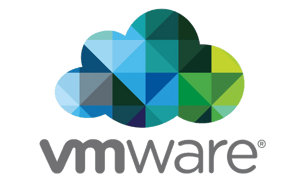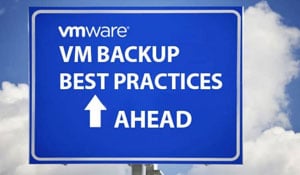Share this
VMware VM Backup Best Practices
by Jon Ferraez on Feb 3, 2015 12:21:16 PM
 This article is designed to walk you through VMware VM backup best practices using the Virtual Dashboard available within NovaBACKUP software. Using the native "Change Block Tracking" (CBT) feature available through VMware, NovaBACKUP will allow you to do daily Differential or Incremental backups of VMware-based virtual machines. This technology detects what blocks of data are required to be backed up based on what changes were made to the virtual machine, so that you do not have to do a "Full" backup each time it executes.
This article is designed to walk you through VMware VM backup best practices using the Virtual Dashboard available within NovaBACKUP software. Using the native "Change Block Tracking" (CBT) feature available through VMware, NovaBACKUP will allow you to do daily Differential or Incremental backups of VMware-based virtual machines. This technology detects what blocks of data are required to be backed up based on what changes were made to the virtual machine, so that you do not have to do a "Full" backup each time it executes.
If VMware VM backup jobs are not configured correctly in the NovaBACKUP Virtual Dashboard, the retention settings may not function as expected. If you previously attempted to create VMware VM-based Differential or Incremental backup jobs in the NovaBACKUP Virtual Dashboard (NVD) and found that you could not get retention working, this article will guide you through the correct setup. Following these steps will ensure retention is applied properly so your VMware VM backup destination does not fill up and leave you without sufficient storage capacity.

This article assumes you are starting fresh with the NovaBACKUP Virtual Dashboard (NVD) as a new user, with no existing configuration. If you already have items configured in NVD—such as VMware VM backup jobs or Hypervisor settings—follow the steps below to clear that configuration so you can begin from a clean NVD setup for the purposes of this guide.
Step A. Exit out of the Virtual Dashboard and NovaBACKUP application if it is running currently.
Step B. Delete the NVD configuration data file: C:\ProgramData\... NovaBACKUP\ClientStorage.xml.
Step C. Load NovaBACKUP software and launch the Virtual Dashboard function from the Home screen, and the Virtual Dashboard will act as though it is the first time you have ever executed it to start from scratch for these instructions to pertain to you.
You will be prompted to add your VMware Hypervisor to the Virtual Dashboard. You will then see a list of all VMs on that vSphere Hypervisor (ESXi/vSphere Server). Select all of the VMs you would like to create VM backup jobs for. In this case, you will need to create two backup jobs for each Virtual Machine, one as a Full Backup and one as either a Differential or Incremental Backup.
Best Practices for VMware Backup using NovaBACKUP
STEP 1: Set up Your First Backup Job
In the Virtual Dashboard area, select the VMware virtual machine that you would like to set up your first backup job on. The first backup job that you create will be a "Full" backup. This is the backup job that you intend to utilize most likely on a weekly, bi-weekly, or monthly basis to perform a full backup of the entire VM. Select the VM as one of your VMs to back up by clicking on the name of the virtual machine. You will be taken to a screen that has a "Backup" button at the top and a "Replication" button to the right of that. This is your backup configuration screen for this one VMware VM that you selected.
STEP 2: Enable Change Block Tracking
At the bottom of this screen, click on the "Enables CBT" button, which stands for "Change Block Tracking." You will need to have CBT enabled to move forward. After clicking the button, you should see the slider at the bottom of the screen showing that CBT is enabled.
STEP 3: Create Your First Full Backup
Now just click "Backup" at the top of the screen to create your first backup job. The first backup job you create will need to be a "Full Backup." To set up a "Full Backup" job, just specify the backup job type as "Full". You will now set the "Destination" storage location for where this Full backup will be stored. You must remember that path because we will reuse this same setting in Step 4. Below the Destination field, you will see a choice for Retention. Turn on Retention, as this will allow you to specify how many "Generations" (which is a count) of these "Full" backups to keep in place on your destination storage device before the oldest iterations are deleted automatically, to reclaim disk storage space.
STEP 4: Set up your Incremental or Differential Backup Jobs
In the Virtual Dashboard, select the same VMware virtual machine as previously used and create a second backup job. This time, we will be creating either a "Differential" backup or an "Incremental" backup. This is the backup job you would most likely utilize on a daily basis to only backup the changed or newly added files inside of this one VM.
Click the "Backup" button at the top of the screen and then fill in the details for this job. Be sure to specify either "Differential" or "Incremental" for the backup type. Set the "Destination" field, which is the folder path for where this Differential or Incremental backup will be stored in to the same Destination folder as the "Full Backup" job utilized when you were in Step 3. After setting the Destination field, you will see the choice for enabling Retention. DO NOT enable the Retention feature. The reason that we are not enabling Retention here is that it will not work here (keep reading, as this is handled automatically for you based on your retention settings in step 3). You can then set up how this job is to be scheduled on the last screen of the "Backup" job creation. Most people want this type of job to be executed daily.
NOTE: Keep in mind that only one backup job can run at a time in NovaBACKUP and in the Virtual Dashboard, so be careful with your scheduling. If set up properly, your Differential or Incremental job should be quite a bit faster than a Full backup. The log will show how long each type of job took, so that you know how to best set up the scheduling for VM backup jobs.
STEP 5: Allow Your First Full Backup to Run Now
In the Virtual Dashboard, select the same VMware VM again and then select the "Full Backup" job that you created in Steps 1-3 of this guide. Tell this "Full Backup" job to run right now by clicking on the "Run Now" icon at the top of the screen. Allow this "Full Backup" job to complete. You will get a completion status in the main logs area of NovaBACKUP as well as in the Virtual Dashboard by looking at that VMware VM's active running jobs screen. NOTE: This "Full Backup" job is 100% required to complete successfully to continue to the next step.
STEP 6: Run Your Incremental or Differential Backup
In the Virtual Dashboard, select the "Differential" or "Incremental" backup job that you created in Step 4 and click "Run Now" to start and complete that job. Allow the Differential or Incremental job that you created to complete.
The next time that your "Full Backup" job executes and completes, either by the scheduled time or when you run it manually with the "Run Now" function it will complete a new "Full Backup", then delete all stored Differential or Incremental backups in one action (this is why a separate retention is not needed for this type of backups), and then deletes the oldest Full backup that existed based on the Generation (Count) that you specified in the "Full Backup" job's "Retention" setting. The Retention setting was specified in Step 3 of this guide.
If you would like to test NovaBACKUP to backup your VMware virtual machines, download NovaBACKUP Server Agent now.
Share this
- Pre-Sales Questions (91)
- Tips and Tricks (90)
- Industry News (37)
- Best Practices (36)
- Reseller / MSP (31)
- Security Threats / Ransomware (26)
- Disaster Recovery (24)
- Cloud Backup (22)
- Storage Technology (22)
- Compliance / HIPAA (20)
- Applications (18)
- Backup Videos (15)
- Virtual Environments (12)
- Technology Updates / Releases (7)
- Backup preparation (6)
- Infographics (5)
- Products (US) (4)
- Company (US) (1)
- Events (1)
- Events (US) (1)
- Unternehmen (1)
- December 2025 (2)
- November 2025 (1)
- October 2025 (2)
- September 2025 (1)
- August 2025 (1)
- July 2025 (1)
- June 2025 (2)
- May 2025 (2)
- April 2025 (2)
- March 2025 (1)
- February 2025 (2)
- January 2025 (2)
- December 2024 (1)
- November 2024 (2)
- October 2024 (1)
- September 2024 (2)
- August 2024 (1)
- July 2024 (2)
- June 2024 (3)
- May 2024 (1)
- April 2024 (2)
- March 2024 (3)
- February 2024 (2)
- January 2024 (1)
- December 2023 (1)
- November 2023 (1)
- October 2023 (1)
- September 2023 (1)
- August 2023 (1)
- July 2023 (1)
- May 2023 (1)
- March 2023 (3)
- February 2023 (2)
- January 2023 (1)
- December 2022 (1)
- November 2022 (2)
- October 2022 (2)
- September 2022 (1)
- July 2022 (1)
- June 2022 (1)
- April 2022 (1)
- March 2022 (2)
- February 2022 (1)
- January 2022 (1)
- December 2021 (1)
- September 2021 (1)
- August 2021 (1)
- July 2021 (1)
- June 2021 (1)
- May 2021 (2)
- April 2021 (1)
- March 2021 (1)
- February 2021 (1)
- January 2021 (1)
- December 2020 (1)
- November 2020 (1)
- October 2020 (1)
- September 2020 (3)
- August 2020 (2)
- July 2020 (1)
- June 2020 (1)
- May 2020 (1)
- April 2020 (1)
- March 2020 (2)
- February 2020 (2)
- January 2020 (2)
- December 2019 (1)
- November 2019 (1)
- October 2019 (1)
- August 2019 (1)
- July 2019 (1)
- June 2019 (1)
- April 2019 (1)
- January 2019 (1)
- September 2018 (1)
- August 2018 (3)
- July 2018 (2)
- June 2018 (2)
- April 2018 (2)
- March 2018 (1)
- February 2018 (1)
- January 2018 (2)
- December 2017 (1)
- September 2017 (1)
- May 2017 (2)
- April 2017 (4)
- March 2017 (4)
- February 2017 (1)
- January 2017 (1)
- December 2016 (1)
- October 2016 (2)
- August 2016 (3)
- July 2016 (1)
- June 2016 (2)
- May 2016 (6)
- April 2016 (5)
- February 2016 (1)
- January 2016 (7)
- December 2015 (6)
- November 2015 (2)
- October 2015 (5)
- September 2015 (1)
- July 2015 (1)
- June 2015 (2)
- May 2015 (1)
- April 2015 (3)
- March 2015 (3)
- February 2015 (3)
- October 2014 (2)
- September 2014 (6)
- August 2014 (4)
- July 2014 (4)
- June 2014 (3)
- May 2014 (2)
- April 2014 (3)
- March 2014 (4)
- February 2014 (5)
- January 2014 (5)
- December 2013 (4)
- October 2013 (6)
- September 2013 (1)

